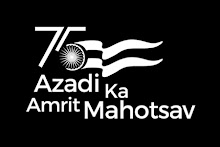Just a week after PM Narendra Modi's dramatic touchdown in Lahore, Pakistani terrorists attacked the strategically vital air force base in Pathankot on Saturday morning, highlighting the challenge and costs involved in the attempt to restore normalcy with the hostile neighbour.
The pre-dawn raid was carried out by fidayeen belonging to Jaish-e-Muhammed, led by Maulana Masood Azhar. They sought to storm the strategically crucial forward operating base located barely 40 km from the Indo - Pak border and at the strategic tri-junction of Jammu & Kashmir, Punjab and Himachal Pradesh.
The base is home to a squadron of MiG-21 fighters as well as MI-25 and MI-35 attack helicopters.
The fidayeen were asked by their handlers to specially destroy the aircraft and choppers. “Choppers aur planes ko uda do (blow up the planes and choppers),“ one of the handlers said in a call intercepted by intel agencies.
At least five terrorists, one of them identified as Nasir Khan, were killed in an exchange of fire with commandos of the National Security Guard and Indian Air Force.Six security personnel, including one IAF commando and five Defence Security Corps men, were also killed. The operation involving attack helicopters began around 3.30 am on Saturday and lasted more than 17 tense hours. The cantonment town, teeming with members of armed forces, was spared a big atrocity because of advance intelligence. A possible hostage crisis was averted by the timely counter-offensive. The Punjabi-speaking terrorists, part of a Jaish group based in Pakistan's Bahawalpur, were taking instructions from two handlers in the hours preceding the attack. The five jihadis were taking instructions from their handlers Maulana Ashfaq and Haji Abdul Shaqur in Pakistan's Bahawalpur. The two owe their allegiance to Maulana Masood Azhar, an old tormentor of India, who along with other Jaish terrorists had to be freed to secure the release of passengers on board the Indian Airlines plane which was hijacked in 1999 with the help of ISI.
Actionable inputs by intelligence agencies, including RAW , that jihadis were on the lookout for a spectacular attack on military targets, together with alarm sounded after they hijacked the vehicle of the Gurdaspur SP , had led the Centre to rush NSG commandos and ramp up security measures at the airbase.
While the terrorists did not succeed in entering the area where fighter aircraft were parked, their audacity underscored the need for caution in dealing with Pakistan.
The pre-dawn raid was carried out by fidayeen belonging to Jaish-e-Muhammed, led by Maulana Masood Azhar. They sought to storm the strategically crucial forward operating base located barely 40 km from the Indo - Pak border and at the strategic tri-junction of Jammu & Kashmir, Punjab and Himachal Pradesh.
The base is home to a squadron of MiG-21 fighters as well as MI-25 and MI-35 attack helicopters.
The fidayeen were asked by their handlers to specially destroy the aircraft and choppers. “Choppers aur planes ko uda do (blow up the planes and choppers),“ one of the handlers said in a call intercepted by intel agencies.
At least five terrorists, one of them identified as Nasir Khan, were killed in an exchange of fire with commandos of the National Security Guard and Indian Air Force.Six security personnel, including one IAF commando and five Defence Security Corps men, were also killed. The operation involving attack helicopters began around 3.30 am on Saturday and lasted more than 17 tense hours. The cantonment town, teeming with members of armed forces, was spared a big atrocity because of advance intelligence. A possible hostage crisis was averted by the timely counter-offensive. The Punjabi-speaking terrorists, part of a Jaish group based in Pakistan's Bahawalpur, were taking instructions from two handlers in the hours preceding the attack. The five jihadis were taking instructions from their handlers Maulana Ashfaq and Haji Abdul Shaqur in Pakistan's Bahawalpur. The two owe their allegiance to Maulana Masood Azhar, an old tormentor of India, who along with other Jaish terrorists had to be freed to secure the release of passengers on board the Indian Airlines plane which was hijacked in 1999 with the help of ISI.
Actionable inputs by intelligence agencies, including RAW , that jihadis were on the lookout for a spectacular attack on military targets, together with alarm sounded after they hijacked the vehicle of the Gurdaspur SP , had led the Centre to rush NSG commandos and ramp up security measures at the airbase.
While the terrorists did not succeed in entering the area where fighter aircraft were parked, their audacity underscored the need for caution in dealing with Pakistan.




No comments:
Post a Comment